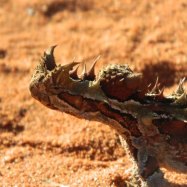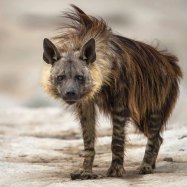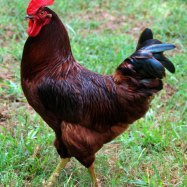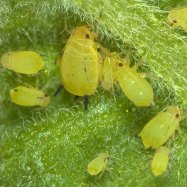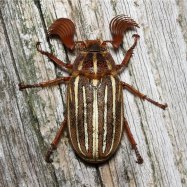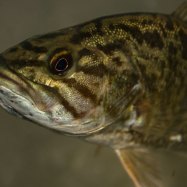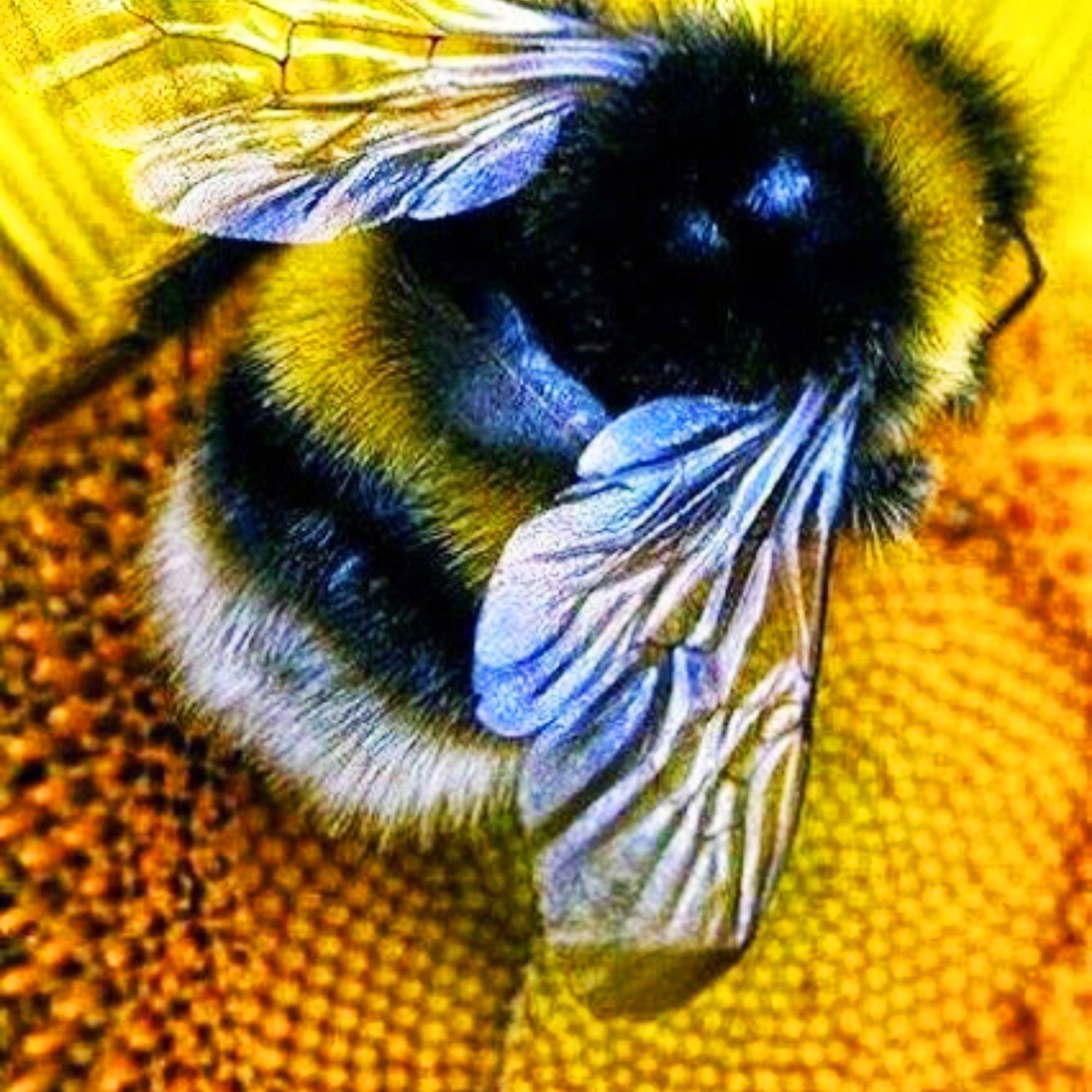
Bee
10 - 20 mm
Bees are an essential part of our ecosystem. These small and compact creatures fall under the family Apidae and can be found all over the world. With a length of 10-20 mm, they may seem small, but they play a big role in pollination and the production of honey. Help protect our buzzing friends for a healthier planet. #savethebees
Animal Details Summary:
Common Name: Honey Bee
Kingdom: Animalia
Habitat: Various habitats, including forests, grasslands, gardens, and urban areas
The Incredible World of the Honey Bee
In a world where animals are often seen as scary or dangerous, it's easy to overlook the small and seemingly insignificant creatures that play a vital role in our ecosystem. One such creature is the honey bee, or Apis mellifera as they are scientifically known. These little creatures are not just responsible for producing the sweet, sticky goodness that we all love – honey – but they also play a crucial role in maintaining the balance of the environment. In this article, we will delve into the fascinating world of the honey bee, exploring their unique characteristics, habits, and the important role they play in our world Bee.The Honey Bee's Taxonomy
Before we dive into the world of honey bees, let's start with the basics – their scientific classification. Honey bees belong to the Kingdom Animalia, which includes all animals. Within this kingdom, they belong to the Phylum Arthropoda, which includes all insects. They are then classified under the Class Insecta, which includes all insects with six legs and a distinct body structure. Honey bees are part of the Order Hymenoptera, which includes insects such as wasps and ants. Finally, honey bees belong to the Family Apidae, which also includes bumblebees and carpenter bees.Appearance and Distribution
Honey bees have a distinct and easily recognizable appearance. They have a small and compact body that measures between 10-20 mm in length. They are usually yellow and black striped, making them stand out among other insects Bagworm Moth Caterpillar. These stripes serve as a warning to predators that they possess a stinger and should not be disturbed. The coloration is also a way for bees to recognize each other and their queen in a hive.One of the most remarkable facts about honey bees is their widespread distribution. They can be found all over the world, from forests and grasslands to gardens and even urban areas. While their exact country of origin remains unknown, they are now present on every continent except Antarctica. This global distribution is crucial for their survival as they play a vital role in pollinating plants and crops, making them an essential part of our food chain.
Habitat and Feeding Habits
As mentioned earlier, honey bees can thrive in various habitats, making them incredibly adaptable creatures. They are highly social insects that live in colonies within a bee hive. The hive is where they build their honeycombs, where their queen lays eggs, and the rest of the bees live and work together for the betterment of the colony. The structure of a beehive is complex and serves as a home, storage, and workplace for the honey bees.Honey bees are herbivorous, which means they subsist on a diet of plants. They visit flowers and collect nectar and pollen, which they then bring back to the hive. Nectar is a sugary liquid produced by flowers, and it serves as the main ingredient for honey. Pollen, on the other hand, is a powdery substance that is essential for the reproduction of plants. Bees collect pollen on their bodies and carry it back to the hive, where it is used as food for the colony.
The Importance of Honey Bees
Honey bees hold a crucial role in maintaining the balance of our ecosystem. As mentioned earlier, they are essential for pollinating plants and crops, making them a vital part of our food chain. It is estimated that one-third of the food that we consume is the result of honey bee pollination. Therefore, without honey bees, we would not have the same abundance and variety of food that we enjoy today.In addition to their role in pollination, honey bees also contribute to the environment in other ways. They help to create diversity in plant species and also contribute to the production of various products such as beeswax, royal jelly, and propolis. These products have their own unique benefits and are used in various industries, from medicine to cosmetics.
Threats to Honey Bees
While honey bees play such a crucial role in our world, unfortunately, they are facing various threats that put their survival at risk. One major threat is the use of pesticides in agriculture. These chemicals not only kill the pests that they are intended for, but they also harm beneficial insects like honey bees. As they visit and collect nectar from flowers, they also ingest these pesticides, which can have a devastating effect on their overall health.Climate change is another significant threat to honey bees. The fluctuating temperatures, unpredictable weather patterns, and changes in plant cycles can disrupt the delicate balance that these creatures depend on for survival. The loss of natural habitats and the spread of invasive species also contribute to the decline of honey bee populations worldwide.
Protecting the Honey Bees
With the vital role that honey bees play in our ecosystem, protecting and preserving their populations is of utmost importance. But what can we do to help? The good news is that there are things that we as individuals can do to make a positive impact.One essential step is to reduce the use of pesticides in our gardens and farms. Instead, opt for organic and natural methods of pest control. Planting flowers and plants that are native to your area can also provide food for honey bees and other pollinators. Creating a bee-friendly habitat in your backyard by providing a water source and shelter can also help.
Another crucial step is to support local beekeepers and their products, such as honey and beeswax. By buying directly from beekeepers, you are supporting their efforts to preserve honey bee populations. Additionally, you can also join organizations and groups that work towards protecting bees and their habitats.
In Conclusion
Honey bees may be small, but their impact on our world is significant. From pollination to the production of various products, they play a crucial role in maintaining the balance of our ecosystem. However, they are facing various threats, and it is up to us to take action to protect these fascinating creatures. By understanding and appreciating the important role that honey bees play, we can work towards a sustainable future for both humans and bees. So the next time you see these buzzing creatures, remember the incredible role they play in making our world a better place.

Bee
Animal Details Bee - Scientific Name: Apis mellifera
- Category: Animals B
- Scientific Name: Apis mellifera
- Common Name: Honey Bee
- Kingdom: Animalia
- Phylum: Arthropoda
- Class: Insecta
- Order: Hymenoptera
- Family: Apidae
- Habitat: Various habitats, including forests, grasslands, gardens, and urban areas
- Feeding Method: Herbivorous
- Geographical Distribution: Worldwide
- Country of Origin: Unknown
- Location: Global
- Animal Coloration: Yellow and black striped
- Body Shape: Small and compact
- Length: 10 - 20 mm
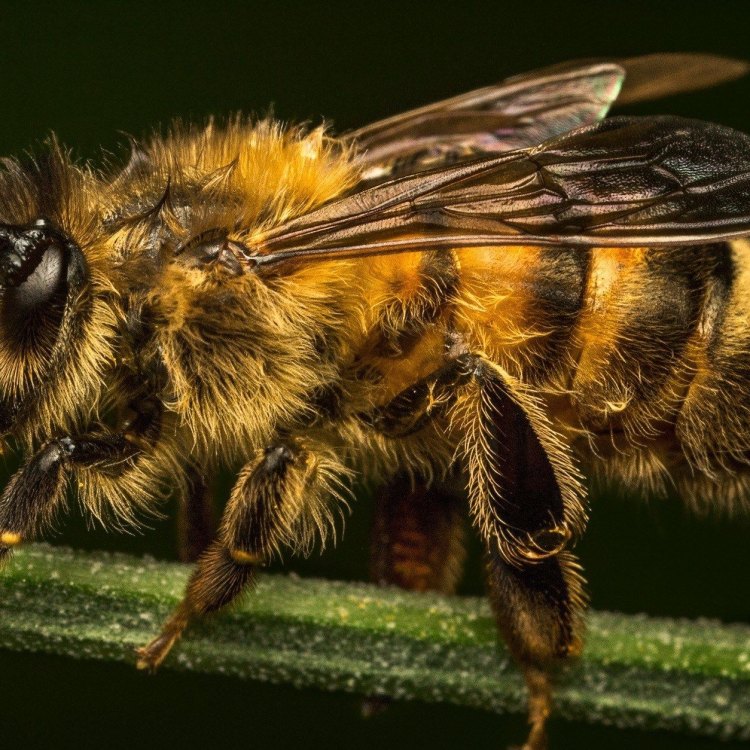
Honey Bee
- Adult Size: 10 - 20 mm
- Average Lifespan: Several weeks to several months
- Reproduction: Sexual
- Reproductive Behavior: Complex, involving mating flights and colony reproduction
- Sound or Call: No distinct sound or call
- Migration Pattern: Non-migratory
- Social Groups: Highly social, living in colonies
- Behavior: Foraging, building and maintaining the hive, caring for young
- Threats: Habitat loss, pesticide use, climate change, diseases, parasites
- Conservation Status: Not listed as endangered
- Impact on Ecosystem: Important pollinators, contributing to plant reproduction and biodiversity
- Human Use: Honey production, pollination of crops
- Distinctive Features: Stinger, pollen baskets on hind legs
- Interesting Facts: Bees perform a complex dance to communicate the location of food sources to other bees
- Predator: Birds, reptiles, mammals, and other insects
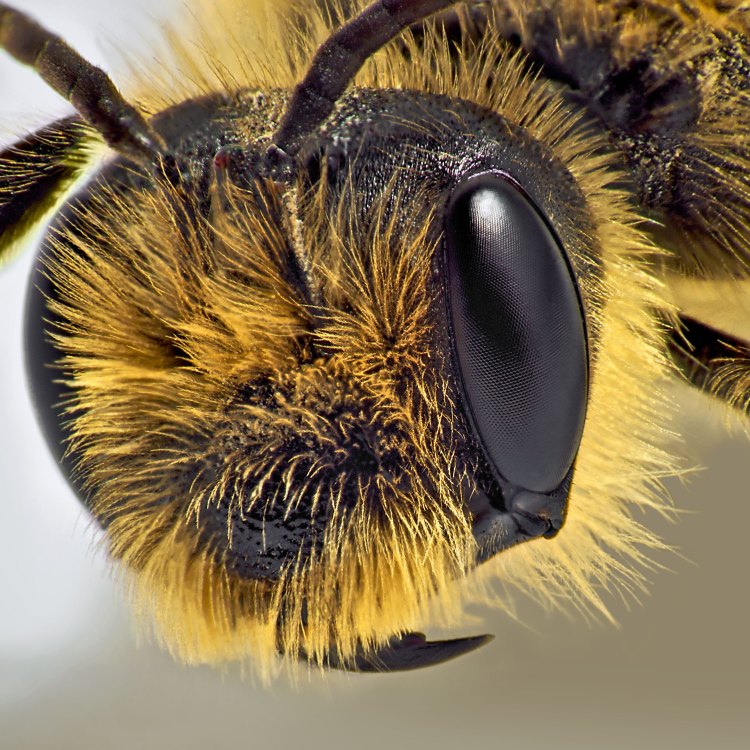
Apis mellifera
The Importance of Bees: Nature's Little Pollinators
Bees. They may seem like small, insignificant insects to some, but in reality, they are crucial for the survival of our ecosystem. From honey production to pollination of crops, bees play a vital role in our lives and the environment. In this article, we will delve into the unique features and behaviors of bees, their impact on the ecosystem, and the threats they face PeaceOfAnimals.Com.Size and Lifespan
The first thing that may come to mind when thinking about bees is their size – small, buzzing insects flitting from flower to flower. But did you know that adult bees can range from 10-20 mm in size? That's about the size of a paperclip!
As for their lifespan, it varies among different species. On average, bees can live for several weeks to several months. However, the queen bee – the main reproductive individual in a colony – can live for up to five years.
Reproduction
Like most other insects, bees reproduce sexually. The male bee, known as a drone, mates with the queen bee during her nuptial flight. This mating process is essential for successful colony reproduction.
Reproductive Behavior
Bees have a complex reproductive behavior, involving mating flights and colony reproduction. When the queen bee is ready to start a new colony, she will leave the hive with a group of workers in search of a suitable location Black And White Warbler. Once they have found a suitable spot, the queen will lay her eggs, and the workers will start building the hive. This process is vital for the survival and growth of the bee population.
Sound or Call
Unlike other animals, bees do not have a distinct sound or call. They communicate primarily through pheromones, body movements, and dances.
Migration Pattern
Bees are non-migratory insects, meaning they do not travel long distances during different seasons like certain bird species. They stay within the vicinity of their hive and travel to nearby flowers for food.
Social Groups and Behavior
Bees are highly social insects, living in colonies. Each colony can consist of thousands of individuals, including the queen, workers, and drones. These social insects work together to forage for food, build and maintain the hive, and care for the young.
One of the most fascinating behaviors of bees is their intricate dance that they perform to communicate the location of food sources to other bees. The waggle dance, as it is called, involves precise movements and patterns to indicate the direction, distance, and quality of the food source. This highly evolved communication system allows bees to efficiently gather nectar and pollen and contribute to their colony's overall survival.
Threats to Bees
As with many other species, bees face a variety of threats in their environment. Habitat loss due to urbanization and agricultural practices is one of the major concerns for bees. With expanding cities and an increasing demand for land for agriculture, bees are losing their natural habitats, resulting in a decline in their populations.
Another significant threat to bees is the use of pesticides in farming. Pesticides not only directly harm bees but also contaminate the nectar and pollen they collect, affecting their health and survival. Climate change is also a concern, as it disrupts the natural cycles of plants and flowers, making it harder for bees to find food.
Diseases and parasites, such as Varroa mites, also pose a significant threat to bee colonies. These pests attack the bees, weakening their immune system and making them more vulnerable to diseases.
Conservation Status
Despite all the threats that bees face, they are not currently listed as endangered. However, their declining populations are a cause for concern and calls for conservation efforts to ensure their survival.
Impact on Ecosystem
The importance of bees in the ecosystem cannot be overstated. As pollinators, they play a vital role in plant reproduction, contributing to the growth and survival of various flora species. Bees help increase plant biodiversity, which ultimately supports the entire ecosystem. Insects, birds, and other animals rely on the plants that bees pollinate for food and shelter, creating a domino effect on the food chain.
Human Use
Bees are not only essential for the environment, but they also play a crucial role in human lives. The most well-known use of bees is for honey production. Bees collect nectar from flowers and turn it into honey, which is then harvested by beekeepers and consumed by humans. Honey has various uses, from sweetening food and drinks to medicinal purposes.
Moreover, bees are also essential for pollinating crops. Without bees, many agricultural industries would suffer, leading to a decrease in food production and a rise in food prices. This impact would not only affect the economy but also our daily lives.
Distinctive Features
Apart from their crucial role in pollination and honey production, bees also have distinctive physical features. Their stinger is a notable trait, used for defense against predators. The stinger is connected to a venom sac that releases a powerful toxin when a bee feels threatened. However, it is important to note that only female bees have stingers, as it is a modified egg-laying organ.
Another unique feature of bees is the pollen baskets on their hind legs. As bees forage for food, they collect pollen from flowers and store it in these baskets to bring back to the hive. This process is vital for pollination, as the bees transfer the pollen from flower to flower as they move.
Interesting Facts
Bees are not just important for our ecosystem and human use, but they also have some fascinating facts and behaviors. We have already discussed their dance communication system, but there is more to bees than just that.
Did you know that bees are not just found on land, but also in water? There are species of bees that can swim and collect food from underwater plants, making them one of the few insects with this ability.
Additionally, bees have a layered vision that allows them to see colors and ultraviolet light, which helps them navigate and find flowers. This unique vision also helps bees identify different petals and flower shapes, making them more efficient pollinators.
Predators
As with any other living species, bees also have predators. Birds, reptiles, mammals, and other insects all prey on bees. One of the most common predators of bees is the honey badger, notorious for their ability to tackle bee hives and consume the honey and bee larvae.
In Conclusion
Bees may be small, but they are mighty creatures with a significant impact on our environment and daily lives. From their complex behaviors and communication systems to their role in pollination and honey production, bees are an integral part of our ecosystem. It is crucial to understand and appreciate these tiny creatures and take steps to preserve their habitats and ensure their survival for generations to come. So let's all be #BeeAware and do our part in protecting these important pollinators.
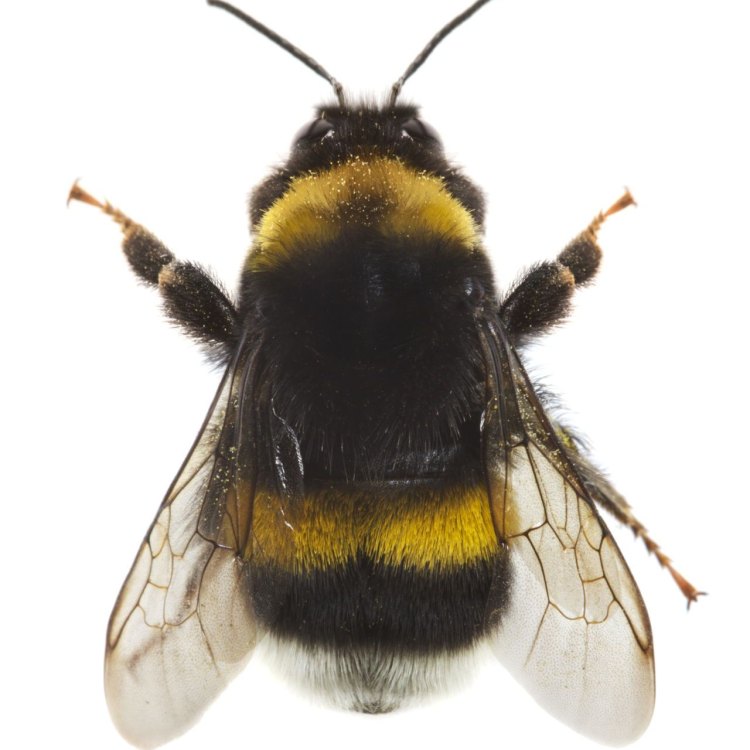
The Incredible World of the Honey Bee
Disclaimer: The content provided is for informational purposes only. We cannot guarantee the accuracy of the information on this page 100%. All information provided here may change without prior notice.

